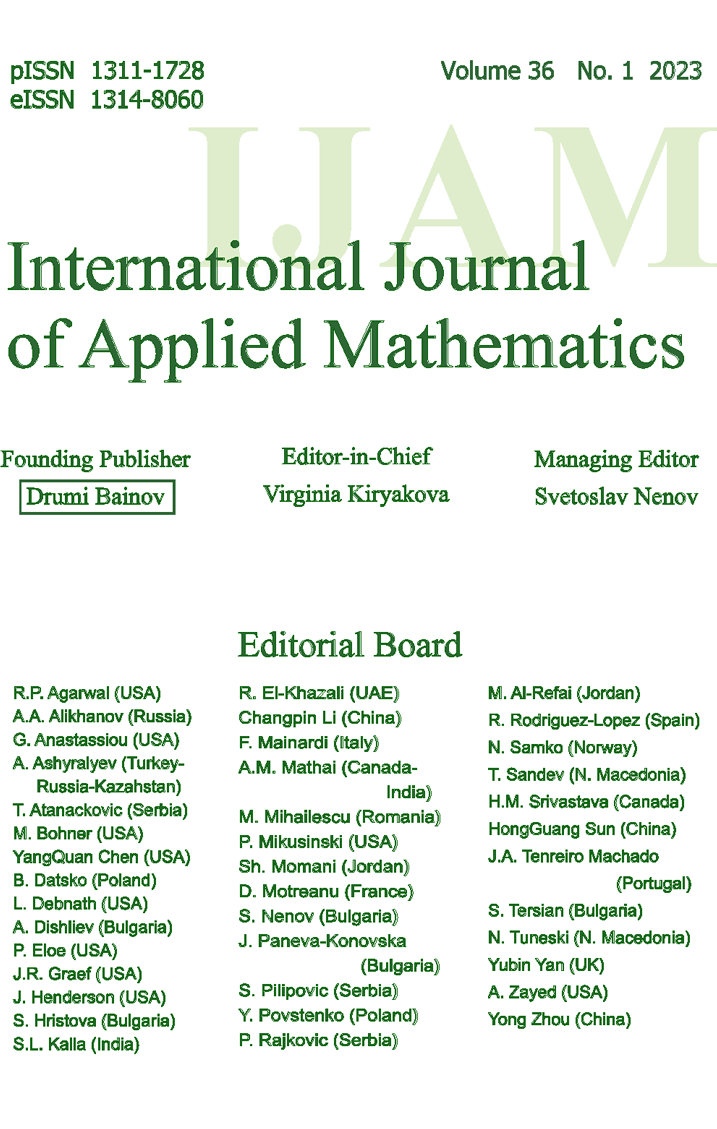TEXT ENCRYPTION ALGORITHM FOR
SECURE COMMUNICATION
SECURE COMMUNICATION
Abstract
In this paper, a new encryption algorithm is presented, designed for secure text message communication. The proposed cryptographic system is based on pseudorandom generator, constructed with two chaotic maps. For security level determination, extensive cryptographic analysis is performed. The evaluation of the presented cryptographic scheme includes the results of statistical testing, key space analysis, frequency analysis, common correlation analysis, entropy analysis, key sensitivity analysis and speed performance. The results are presented and explained in this paper.Citation details of the article
Journal: International Journal of Applied Mathematics Journal ISSN (Print): ISSN 1311-1728
Journal ISSN (Electronic): ISSN 1314-8060
Volume: 34 Issue: 4 Year: 2021 DOI: 10.12732/ijam.v34i4.9
Download Section
Download the full text of article from here.
You will need Adobe Acrobat reader. For more information and free download of the reader, please follow this link.
References
- [1] C.K. Volos, I.M. Kyprianidis, I.N. Stouboulos, Text encryption scheme realized with a chaotic pseudo-random bit generator, Journal of Engineering Science & Technology Review, 6, No 4 (2013).
- [2] M.A. Murillo-Escobar, F. Abundiz-Prez, C. Cruz-Hernndez, R.M. LpezGutirrez, A novel symmetric text encryption algorithm based on logistic map, In: Proc. of the International Conference on Communications, Signal Processing and Computers, 4953 (2014).
- [3] M. Mishra, V.H. Mankar, Text encryption algorithms based on pseudo random number generator, International Journal of Computer Applications, 111, No 2 (2015).
- [4] P.K. Shukla, A. Khare, M.A. Rizvi, S. Stalin, S. Kumar, Tapplied cryptography using chaos function for fast digital logic-based systems in ubiquitous computing, Entropy, 17, No 3 (2015), 13871410.
- [5] S.J. Sheela, K.V. Suresh, D. Tandur, Secured text communication using chaotic maps, In: 2017 International Conference on Algorithms, Methodology, Models and Applications in Emerging Technologies (ICAMMAET), IEEE (2017), 16.
- [6] M.Z. Abdullah, Z.J. Khaleefah, Design and implement of a hybrid cryptography textual system, In: 2017 International Conference on Engineering and Technology (ICET), IEEE (2017), 16.
- [7] K.M. Kordov, Modified chebyshev map based pseudo-random bit generator, AIP Conference Proceedings, 1629, No 1 (2014), 432436.
- [8] K. Kordov, Modified pseudo-random bit generation scheme based on two circle maps and xor function, Applied Mathematical Sciences, 9, No 3 (2015), 129135.
- [9] K. Kordov, Signature attractor based pseudorandom generation algorithm, Advanced Studies in Theoretical Physics, 9, No 6 (2015), 287293.
- [10] K. Kordov, A novel audio encryption algorithm with permutationsubstitution architecture, Electronics, 8 No 5 (2019), # 530.
- [11] J.L. Kaplan, J.A. Yorke, Chaotic behavior of multidimensional difference equations, In: Functional Differential Equations and Approximation of Fixed Points, Springer, Berlin-Heidelberg (1979), 204227.
- [12] A. Rukhin, J. Soto, et al., A statistical test suite for random and pseudorandom number generators for cryptographic application, NIST Special Publication 800-22, NIST, Gaithersburg (2001).
- [13] G. Marsaglia, The marsaglia random number cdrom including the diehard battery of tests of randomness, http://www.stat.fsu.edu/pub/diehard/ (2008).
- [14] J. Walker, Ent: a pseudorandom number sequence test program, http://www.fourmilab.ch/random/ (2008).
- [15] IEEE Computer Society, 754-2008 - IEEE standard for floating-point arithmetic, Revision of ANSI/IEEE Std 754-1985, (2008), 170.
- [16] K. Kordov, S. Zhelezov, Steganography in color images with random order of pixel selection and encrypted text message embedding. PeerJ Computer Science, 7 (2021), # e380.
- [17] B. Stoyanov, K. Kordov, Pseudorandom bit generator with parallel implementation. In: International Conference on Large-Scale Scientific Computing, Springer, Berlin-Heidelberg (2013), 557564.
- [18] S. Zhelezov, H. Paraskevov, Possibilities for steganographic parallel processing with a cluster system,Contemporary Engineering Sciences, 8, No 20 (2015), 809816.

